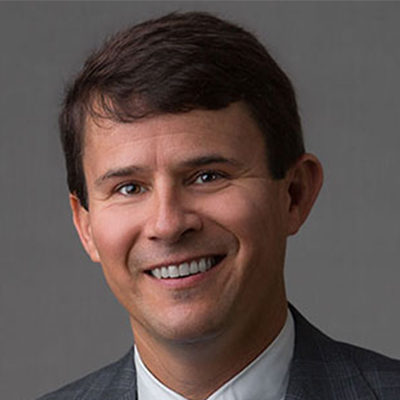MPF Surveys
-
 Read More
Read MoreWant to know who’s really driving change in the legal industry? Check out the Corporate Legal Operations Consortium, a relatively new organization that’s already driving impactful and lasting change. These are the MPAs and CPAs imbedded within in-house legal departments, their mission is “to help legal operations professionals and other core corporate legal industry players (e.g. tech providers, law firms, LPO’s, law schools, etc.) optimize the legal service delivery models needed to support the needs of small, medium and large legal departments and government entities.” That means innovation, technology, metrics, process improvement and value-based billing like we’ve never seen before. Get ready for change!
Click here for CLOC’s Website
Click here to learn about CLOC 2019 Vegas Institute
-
 Attachment
AttachmentThis brief report provides national data for 35 positions – both lawyers and support staff – broken down by firm size. Its data is based on survey results from over 5,000 respondents in 38 cities. It also provides four industry insights. Here are few interesting nuggets:
- The average total compensation for law firm COOs is $167,075
- The average Non-Equity Partner made $266,640 in 2018
- Average scores on the multi-state bar exam dropped to the lowest level since the exam was first administered in 1972
How well is your firm paying its people when compared to these national averages?
-
 Attachment
AttachmentThis 30-page report includes salary ranges for nearly 50 different positions, then a variance chart to adjust the salaries to your city. The data is based on actual placements made by Robert Half in both the US and Canada. The report also includes hiring trends for legal professionals and in-demand practice areas. Here are a few highlights:
- More US law firms are using personality assessments to help reduce turnover rates for both lawyers and support staff
- Demand is growing for tech-savvy support staff, with the hybrid paralegal/legal assistant role becoming more commonplace
- Litigation, real estate, compliance and health care are among the high-growth practice areas for US law firms.
This report includes some data and we think it’s presented very well.
-
 Read More
Read MoreDespite the advent of social media and the Internet, we maintain that law remains a “people business.” By that, we mean that clients hire lawyers, not law firms. There are exceptions, of course, but generally we maintain that clients hire lawyers, and that they hire (and refer) lawyers they know, they like, and they trust. For lawyers and law firms, that means building and cultivating relationships and reputation among persons in a position to hire a lawyer with your interest and skills set. It means breaking bread and active participation in target-rich organizations, and that social media plays a supporting role. It’s not rocket science. You just have to get out there and do it.
In the session, we discuss:
- Best Strategies to Keep Current Clients,
- Best Strategies to Attract New Clients, and
- The Seismic Shift in How Law Firms are Reallocating their Marketing Resources.
In this fast-paced session, we share our thoughts on best practices. And we’ve been in the law firm business for more than 25 years.
-
 Read More
Read MoreThis year, ALA has collected data for more than 60 different positions from more than 1,000 law office locations in 50 states. As an example, click here to see excerpts from the 2017 report, including compensation for law firm COOs and Executive Directors, key staffing ratios, and associate billable hour expectations. Importantly, you'll note that data is broken down by firm size, region and other factors.
- The ALA Survey is the most comprehensive tool for determining compensation and benefits for legal management staff for firms of all types, sizes and locations.
- The report includes critical bench-marking data for associate attorneys, as well as legal management staff positions. This year, they've also added questions about succession planning and partner capital contributions.
- ALA is offering substantial discounts to readers of The MPF Weekly. Use the promotional code “MPF2018" when you place your order.
With 400+ pages of information, these Reports are essential tools to determine compensation and benefits for your firm's management staff. We highly recommend them.
-
 Attachment
AttachmentAccording to our research, succession planning has emerged as one of the top areas of concern for managing partners of smaller and -mid-size law firms. Generally, we break succession into three main areas — ownership, leadership and client transition — and here’s a snap-shot of how law firms are doing:
- Forty-four percent (44%) of firm leaders report that their firms have unfunded retirement obligations. Half of them say it’s cause for concern.
- Forty-eight percent (48%) of firm leaders report that their law firms are not doing a good job on succession planning, in general.
- Fifty-two percent (52%) report that their firms are not doing a good job handling the retirements of senior partners.
- When it comes to leadership training for young lawyers, only six percent (6%) of firm leaders say their firms are doing and “excellent” job. Only twenty-one percent (21%) say they’re doing a “good” job.
Succession planning should start early, and its expectation should be woven into your firm’s culture if you and your partners care about legacy and the long-term sustainability of the enterprise.
-

On occasion, we kick off the MPF Leadership Conference with a keynote presentation to set the stage for the Conference. In 2018, we invited Patrick Fuller to present an overview of the legal industry based on data collected by ALM Intelligence. It’s a tough market place out there, full of change and volatility. Here are a few highlights:
- Sluggish Revenue Growth for BigLaw
Since 2008, revenue for the AmLaw 200 firms has hovered at a sluggish two percent (2%) growth rate per year. Compare that to 2000-2008, when revenue growth for BigLaw averaged more than ten percent (10%) per year.
- Effective Hourly Rate Increases Slowing Down as Well
Since 2008, effective hourly rate increases achieved by the AmLaw 200 firms has also slowed significantly with the ACC Value Challenge, Alternative Service Providers (ASPs) and the Corporate Legal Operations Consortium (CLOC.org) largely responsible.
- BigLaw Experiencing Declines in Financial Performance
In fact, nine out of ten (91%) AmLaw 200 firms report a decline in at least one key performance metric over the last three years, including sixty-one percent (61%) reporting declines in total revenue, eighty-three percent (83%) reporting declines in revenue per lawyer (RPL) and eighty-five percent (85%) reporting declines in profit per lawyer (PPL).
- Corporate American Bringing More of its Legal Work In-House
Before the downturn, sixty-nine percent (69%) of the legal spend by the Fortune 500 in-house legal departments was performed by outside counsel. In 2017, that percentage shrunk to sixty-one percent (61%), with the trend projected to continue.
- BigLaw Expanding Aggressively into Major US Markets
AmLaw 200 firms are expanding aggressively into big legal markets like Atlanta, Dallas, Denver, Houston, Miami and Salt Lake City primarily through acquisitions of smaller and mid-size firms. Analysis suggests mixed results. Interestingly, none of the managing partners at this year’s MPF Leadership Conference want their firms to be acquired.
At MPF, we believe that these and other long-term trends present exciting opportunities for well-run smaller and mid-size firms with focused plans and effective leadership.
- Sluggish Revenue Growth for BigLaw
-
 Attachment
AttachmentEach year, we ask participants at The MPF Leadership Conference a series of questions about how their firms are evolving and adapting to the changing legal profession. We ask a question, the managing partners vote, the answers appear, and we discuss what it means. Think “Ask the Audience” on “Who Wants to be a Millionaire.” It’s a great way to start the day and provides participants timely information to share back home. Here are a few findings:
- Forty-five percent (45%) of firm leaders are dissatisfied with their firm’s current culture.
- Sixty-four percent (64%) report “mixed success” with lateral hiring.
- Ten percent (10%) say they use psychological testing as part of their hiring process.
- “Succession planning” tops the list of biggest challenges, leap-frogging “Marketing” for the first time.
How would you answer the polling questions for your firm?
-
 Read More
Read MoreFor this year's Reports, ALA (Association of Legal Administrators) has collected data for 60+ different positions in 40+ metropolitan areas, including compensation information for law firm COOs, Executive Directors and other key positions, as well as key staffing ratios and associate billable hour expectations. Importantly, the Reports break down the data by firm size, region and a myriad of other factors. With 400+ pages of information, these Reports are essential tools to determine compensation and benefits for your firm's management staff. MPF readers get $100 off the purchase price. The promotional code is “MPF2017.”
-
 Read More
Read MoreLaw Practice Today is a monthly digital publication by the ABA’s Law Practice Division that provides “the most current information and trends in the legal industry by delivering anecdotes from professional in the field of law.” Each year, they publish “The Leadership Issue” featuring a collection of articles about law firm leadership and governance. Among the articles in this issue:
- Leadership: Do We Have it All Wrong?
Susan Letterman White - Building a Culture of Rainmakers
David King Keller - Nine Simple Actions to Create a Culture of Leadership
Anna Rappaport - It’s Never Too Early to Plan for Management Transition
David R. Pierce - Five Traits of Champion Managers
Andrew Elowitt and Marcia Watson Wasserman
This is good stuff.
- Leadership: Do We Have it All Wrong?
-

Looking Forward to the Year AheadCurrent Issues, Trends and Challenges Facing Today’s Law Firms
Read MoreA 60-minute Webinar for TAGLaw presented on Sept. 27, 2017
On September 27, 2017, we presented a 60-minute Webinar for TAGLaw, a global law firm network with 290 member firms in 100 countries. It’s a hard-hitting session covering a variety of important topics for firm leaders, including:
- Leadership & Governance
- Strategic Planning
- Marketing & Business Development
- Problematic Partners
- Succession Planning
- Associate Recruiting & Retention
- Role of COO/Executive Director
We’re delighted to be a featured speaker at TAG Alliances’ 2018 International Conference, which will be held October 24-26, 2018.
-
 Attachment
AttachmentDuring our opening session, we deploy audience polling technology to query participating managing partners on a variety of topics. It’s a great way to start the Conference, and provides participants with timely bench-marking data they can take back to their firms and share with colleagues. Here are a handful of some of the more interesting findings:
- Thirty-eight percent (38%) say their firms require individual lawyer marketing plans.
- Thirty-two percent (32%) of firm leaders report they provide marketing and business development training.
- Seven percent (7%) report they are doing an “excellent” job identifying and grooming future firm leaders.
- Forty-eight percent (48%) have adopted a more formal governance model in the last five years.
- The top three issues impacting the legal profession over the next ten years? Pricing for legal services, technology and disruption from non-law firms.
As with The MPF Leadership & Governance Survey, this is important bench-marking information to share and discuss with your colleagues.
-
 Attachment
AttachmentEach year at the MPF Leadership Conference, we deploy audience polling technology to pose 20-25 questions to participating firm leaders. The results are anonymous and instantaneous. These survey results include participation from 86 managing partners who attended The MPF Leadership Conference in May 2016.
-
 Read More
Read MoreAccording to recent MPF surveys, marketing and business development are top of mind among managing partners of smaller and mid-size law firms. More and more firms are hiring in-house marketing professionals, increasing their marketing and business development budgets, and shifting resources toward business development, including sales training for lawyers young and old.
In this fast-paced webinar we presented for the Legal Marketing Association, we discussed with three managing partners their insights and perspectives on law marketing and business development. We’d like to extend a very special thanks to our panel:
James A. Dressman, III, Esq.
Managing Partner, Dressman Benzinger LaVelleFrancis H. Sheppard, Esq.
Managing Partner; Rumberger, Kirk & CaldwellRaymond J. Werner, Esq.
Past Managing Partner, Arnstein & LehrClick here for the Webinar.
Click here for handout materials.

















